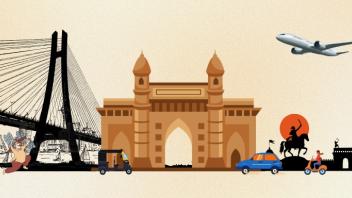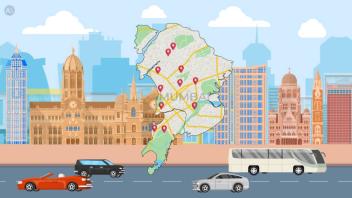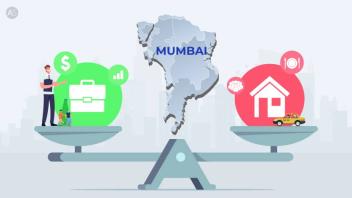Moving to Mumbai? Here's a Helpful Guide!
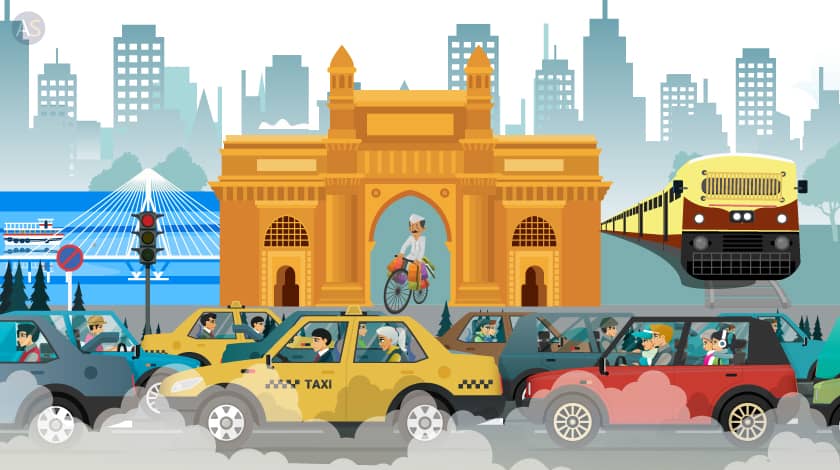
A financial powerhouse, a global cosmopolitan, the cultural capital of India, and a fast-paced city that simply refuses to give in.
Mumbai is many things. From a cluster of seven fishing islands to a global cosmopolitan, the city has undergone some drastic changes in the past couple of centuries.
Moving to Mumbai is the dream for many. It represents opportunities and a better future, and it comes as no surprise that this is one of the most popular destinations for a growing workforce that want to make its mark on their respective industries.
But it isn't easy living here; it isn't easy assimilating, and it isn’t easy succeeding either. If you do, however, the world is your oyster.
If you are planning on moving here, you will definitely need some insights into the city and its inner workings. Hopefully, this guide to Mumbai will help you understand your new city better and assimilate faster.
Aamchi Mumbai
Located on the western coast of India is the financial powerhouse that is Mumbai. Formerly known as Bombay, a prominent British port and city, it is now the 4th largest city in the world and the cultural and financial capital of the country. It has a population of over 20 million and is home to Bollywood, the Indian film industry.
Relocating to Mumbai
Relocating to Mumbai is complex and quite different from moving to other cities. It is crowded and cramped for space, so the final leg of the transit and unloading can pose many challenges. So hiring a mover that is proficient and experienced helps, and you can find such movers on AssureShift.
You can move from any major city in the country with movers that have years of experience in delivering goods to Mumbai. They are quick, efficient and extremely professional. You will also want to prepare your stay beforehand since it is not easy to hunt for one that meets both your budget and your requirements.
Accommodation
|
Type of Accommodation |
Cost |
|
PGs |
₹ 6,000 + |
|
1 BHK |
₹ 15,000 - ₹ 25,000 |
|
2 BHK |
₹ 25,000 - ₹ 40,000 |
|
3BHK |
₹ 35,000 - ₹ 80,000 |
The biggest difficulty you will face initially is finding suitable accommodation that meets your requirements, suits your taste and is within your budget.
The rental prices in Mumbai are sky-high, like ridiculously high. Localities like Bandra, Santa Cruz and Andheri are simply out of the question, and South Bombay is also ridiculously expensive.
If you are looking for affordable housing, the suburbs of Navi Mumbai and Thane are your best bet. But if you do live there and work in Mumbai, the commute is something that you will need to worry about. While there are plenty of options, it is not what you call easy.
Cost of Living
The cost of living in Mumbai is sky-high. While some things like local food, public transport and clothing are quite cheap but everything else is expensive. The rental costs are through the roof, and groceries and fine-dining restaurants are also quite expensive.
If you want to live comfortably eating outside and spending on entertainment, you will need more than ₹ 30,000 a month. If you plan on partying and having an extremely active social live, it will shoot to well north of ₹ 40,000.
|
Rent |
₹ 10,000 - ₹ 25,000 |
|
Food |
₹ 3,000 - ₹ 5,000 |
|
Utility |
₹ 1,000 - ₹ 1,500 |
|
Transportation |
₹ 800 - ₹ 1,500 |
|
Entertainment |
₹ 2,000 - ₹ 4,000 |
|
Miscellaeneuos |
₹ 2,000 - ₹ 3,000 |
|
Total |
₹ 20,000 - ₹ 46,000 |
Opportunities
This is the biggest selling point of Mumbai. The city has no dearth of career opportunities. Regardless of what your expertise is, you can make something of yourself as long as you are ready to grind it out like the rest of its inhabitants.
The city is the trade, industries and financial capital of India. The result is thousands of business enterprises, industrial estates and tech companies, constantly growing like a tiger in its adolescence.
Like as if that isn’t enough, Mumbai is also the fashion capital of India and home to Bollywood, the Indian film industry.
So, whether you are an accountant, a fashion designer or a techie, if you are skilled enough, this city has a place for you. But the grind is going to be unlike anything you have experienced, so be prepared for it.
Transport
Due to its inconvenient shape, the commute in Mumbai is a mess. Although it has some of the most extensive public transport systems in India, it still isn’t good enough to deal with the sheer volume of people that use it every day. But then again, it is a part of the city's charm.
You can use BEST buses for road transport and cabs and rickshaws for travelling nearby. But if you are planning to go quite a distance on your journey, you might want to use Mumbai’s iconic local trains.
Mumbai Locals
The fastest way to get around the city of seven islands is to use its iconic local train network. Divided into central line and eastern line, it operates throughout the entire city and is extremely well-connected.
The central line begins at Church gate station in South Bombay, while the eastern line starts at Badlapur. Although it is the fastest way around the city, I would have to caution first-time users since it can be a hair-raising experience during peak hours.
It is extremely crowded, and I cannot emphasise the word extremely enough. You are literally shoved around and herded in and out of trains like goats by the crowd. While it is an adventure that you should experience at least once, whether you want to go for it again is up to you.
Traffic
The reason for the popularity of the local trains, apart from cost-effectiveness and speed, is the fact that Mumbai has a massive traffic problem. Its suffocating lack of space has created a chronic traffic problem that cannot be solved in the short term.
The problem is simply not the volume of traffic but also that it simply never ends! The city has no peak hours. Unless it is in the wee hours of the morning or midnight, you will always encounter traffic, so avoid using personal vehicles if you have more than 15 km to travel.
Food
One of Mumbai’s greatest cultural aspects is its street food scene. It is tasty, colourful and light on your pockets. Vada Pavs, Bhatures, Tikkis and Misals never fail to satisfy you. I would highly recommend you to indulge in the local food as much as possible. Fine dining restaurants are expensive and modern takeaways simply cannot match up with the established incumbents when it comes to price.
Dabbawalas
If the local food is not up to your liking or causing distress in your bowels, you can make use of another one of Mumbai’s icons, its faithful and tireless Dabbawallahs who provide hot home-cooked meals to the thousands of employees across the city.
Run by the Nutan Mumbai Tiffin Box Suppliers Charity Trust (NMTSCT), its members, colloquially as “dabbawalas”, deliver freshly cooked meals from over 2,00,000 suburban homes to the offices in the downtown and midtown areas. Every day, 5000 Dabbawalas carry meals prepared by thousands of wives and mothers. This large-scale operation is beyond belief and a sight to behold.
Weather
This is definitely not one of the reasons for moving to Mumbai. While it is not unbearable, the city has annoying climatic conditions. The weather is warm year-round, and the summers are hot and humid, and that's not even the worst bit.
The worst bit about Mumbai’s weather is the monsoon. The city is barraged by incessant rains that flood the streets and cause chaos yearly. Whether it's trains, buses or cabs, it will be nigh on impossible to travel when the worst of it hits. And yet, amazingly, the city simply never stops.
Education
Although Mumbai is not exactly known as an education hub, it is home to some of the oldest educational institutions in the country. University of Mumbai, Wilson College, and Elphinstone College have centuries of History. There are some other distinguished educational institutes like IIT Bombay, ICT, and St. Andrews college that have all seen amazing intellectuals walk through their storied halls.
Languages
Unless you are absolutely clueless about Hindi, you won’t face any sort of language barrier. While Marathi is the most popular language, it is followed closely by Hindi and then English and Urdu. If you can hold a conversation in Hindi, it should be more than enough for you to get by.
But you will need to know a few words that Mumbaikars use even while speaking Hindi. For example, whether they are speaking Hindi or Marathi, Potato is Batata and not Aloo and Onion is Kanda and not Pyaaz.
Conclusion
If you know these things, then it should be enough for you to live comfortably and assimilate quickly into your new life in the big city. This blog isn’t extensive by any means, but it is more than enough for those to get an idea about what they should be on the lookout for when moving to Mumbai.

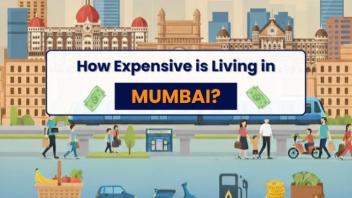
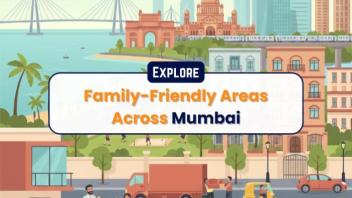
![Packers and Movers Charges Mumbai - 2025 [Updated]](/sites/default/files/styles/blog_teaser/public/images/blog/packers-and-movers-mumbai-charges-2025.jpg?itok=2rwsISVZ)
